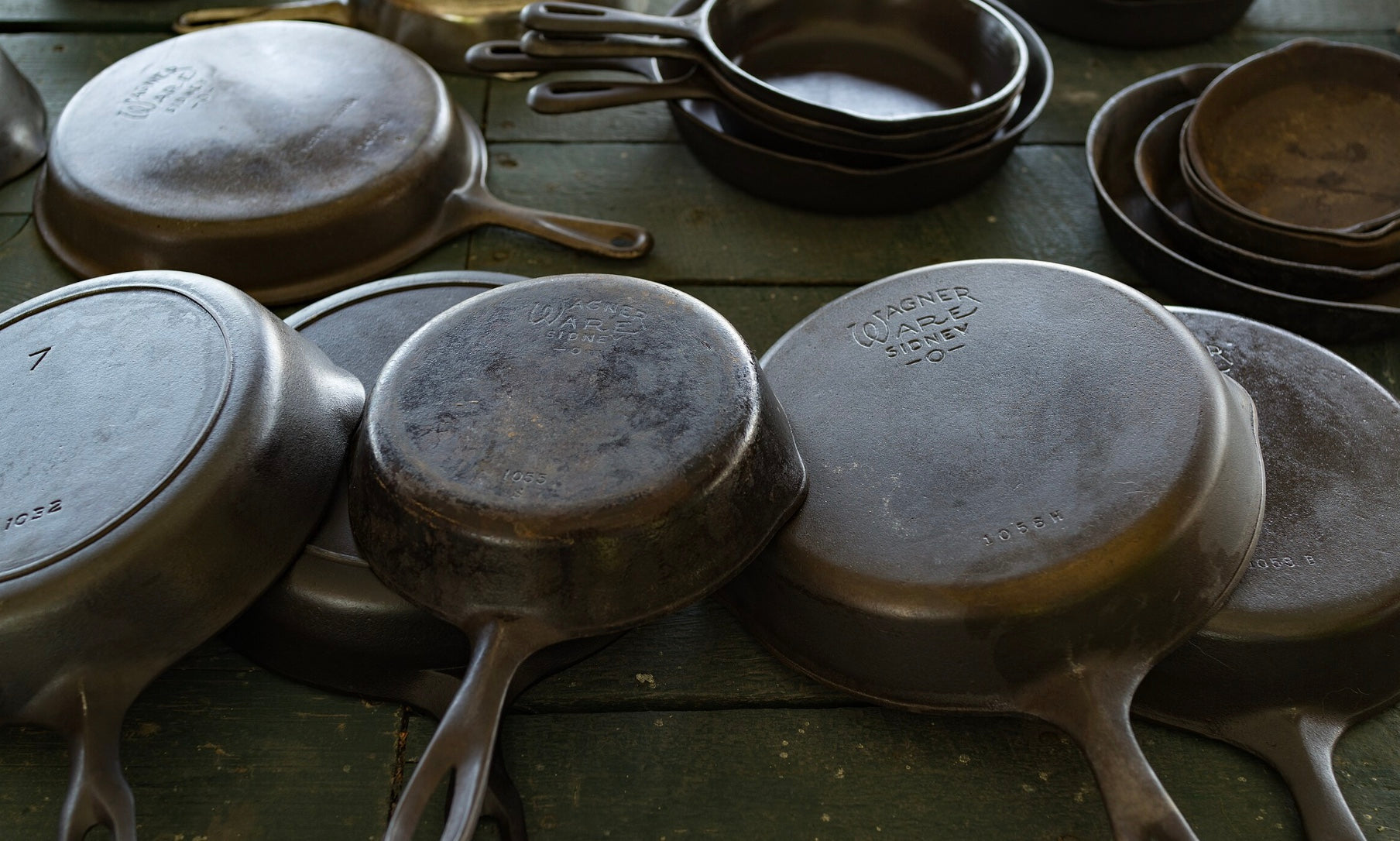Cast iron pans are the workhorses of the kitchen — built to last, packed with character, and perfect for everything from searing steaks to baking cornbread. At The Feedlot, we think of them the same way we do a good smoker: seasoned over time, tough as nails, and absolutely essential.
Let’s dig into the history, care, and evolution of this timeless tool — and how to keep yours in top form for decades of meals to come.
A Brief History: From Foundries to Flame
Cast iron has been used in cooking for over 2,000 years, with the earliest known examples coming from China. By the 18th and 19th centuries, it became a kitchen staple across Europe and the United States, prized for its even heat retention and durability.
In the U.S., brands like Griswold, Wagner, and later Lodge became household names. Aussie kitchens embraced it too — especially in bush cooking and campfire traditions, where a good cast iron pot was worth its weight.
Today, vintage cast iron is highly collectible, but newer brands are also bringing fresh energy (and smoother finishes) to the market.
How to Care for Cast Iron (Without the Drama)
If you’ve ever heard cast iron is high-maintenance — don’t stress. It’s tough stuff, and with a little know-how, it’ll reward you for life.
The Basics:
-
Seasoning: This is the thin layer of polymerised oil that gives cast iron its non-stick finish and rust resistance. Most pans come pre-seasoned, but adding a few layers at home builds strength.
-
Cleaning: Skip the soap and dishwasher. Just rinse with warm water and scrub with a stiff brush or chainmail scrubber. Stuck bits? Use coarse salt as an abrasive.
-
Dry Immediately: Wipe dry and place over low heat to evaporate moisture.
-
Oil Lightly: Once dry, rub a thin layer of oil (grapeseed, flaxseed, or even tallow) all over the pan to protect it between uses.
Reviving Rusty or Neglected Cast Iron
Found a rusted beauty at a garage sale or neglected your pan during winter? Don’t toss it. Here’s how to bring it back:
-
Strip it back: Use steel wool or an oven cleaner to remove rust and old seasoning.
-
Re-season: Coat with a thin layer of oil and bake upside-down at 220°C for an hour. Repeat 2–3 times.
-
Get cooking: Fry something fatty (bacon or sausage) to help re-establish the seasoning.
Lodge vs. the New Guard: Modern Cast Iron Options
Lodge has been the go-to for generations — made in the USA, durable, affordable, and now widely available in Australia.
But boutique cast iron brands are raising the bar on craftsmanship and finish:
-
Field Company (USA): Lighter, smoother, and a nod to vintage Griswold-style pans.
-
Smithey (USA): Elegant designs, hand-polished interiors, and copper-like handles.
-
Butter Pat (USA): Ultra-light and ultra-smooth, originally an independent premium brand — now acquired by YETI, which has expanded the line with 8", 10", and 12" skillets featuring ergonomic handles, dual pour spouts, and the same USA-made, hand-finished quality.
In Australia, Solidteknics has taken a bold step with one-piece, rivet-free pans made of wrought iron (a sibling to cast iron) — lighter, faster to heat, and still capable of building a killer seasoning.
So, is Lodge still worth it? Absolutely. It’s affordable, time-tested, and perfect for everyday use. But if you're looking for premium performance or heirloom-worthy aesthetics, newer brands — including YETI’s Butter Pat line — are worth exploring.
Why Cast Iron and BBQ Are Made for Each Other
Cast iron can take the heat — literally. It’s perfect for:
-
Searing steaks before or after the smoker
-
Skillet cornbread, biscuits, or cobblers
-
One-pan campfire meals
-
Grilling onions, mushrooms, or fruit on the BBQ
Plus, that deep seasoning layer builds up flavour just like your smoker’s firebox.
Final Thoughts
Treat your cast iron like you treat good meat: with care, attention, and fire. Whether it’s a modern pan or Grandma’s old skillet, a well-loved piece of cast iron will never let you down.
So go ahead — heat it up, feed the flame, and let the pan tell your story one cook at a time.


